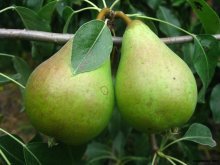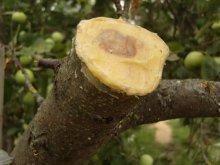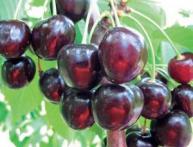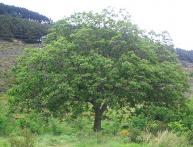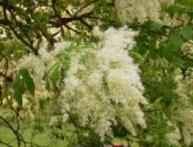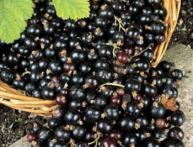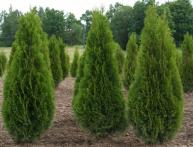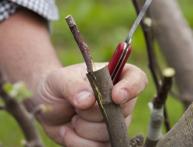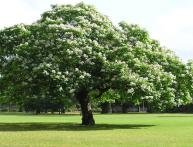Pruning pears in spring: rules and tips for young and old trees
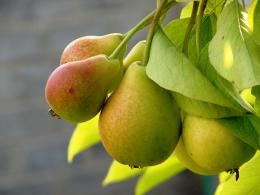
With the onset of spring, all gardeners begin to spend pruning trees. These works are carried out with the aim of increasing productivity and returning growth. The pruning process is very delicate, so in order for everything to go right, you need to take into account all the existing nuances.
Content:
- Trimming Features
- Types of pruning
- Pruning young and old pears
- Pear pruning rules
- What tools are needed for pruning?
Trimming Features
The pear is considered a light-loving crop, so its thick crown needs to be trimmed periodically. Eliminating unnecessary branches helps create a tree skeleton that can support the largest fruits. A correctly formed crown allows you to harvest the crop without difficulty and freely spray the tree.
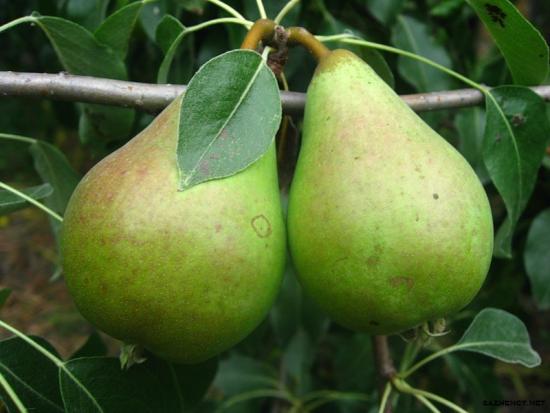
Untimely or incorrect pruning can lead to decreased fruiting. Pruning of a pear should be carried out from the very first days of the tree’s life until it dies. All necessary work to remove branches must be done in early spring, before leaves appear on the tree. After all, when pruning branches, leaves are removed, which are necessary for the full development of the tree.
Types of pruning
The process of removing branches is carried out using two methods: shortening and thinning. Shortening is done by removing the top shoots with the tops of the branches. This type of pruning is used when the tree grows strongly upward.Shortening the branches ensures full development of the buds and overall strengthening of the tree.
When thinning, tree branches are completely removed, thus preventing thickening of the crown. Also, thinning the branches ensures adequate supply of light and air to the tree. With these two pruning methods, the tree can properly distribute all the nutrients and water supplied to it. There is also the so-called pruning of pears by age. This is pruning a young pear and pruning an old pear.
Pruning young and old pears
The very first pruning, which is the most basic, is carried out immediately after landings seedling. Trees older than one year should be pruned twice a year. Thus, the branching of the tree increases and fruit branches form. Due attention should be paid to tops. After all, they form very abundantly after the winter period.
Video instructions for pruning pears:
The main purpose of pruning an old pear is to rejuvenate it and give the crown an umbrella shape. The process itself begins by removing the top of the crown along with the shoots. Crowns can be removed by a third or half. Also, in order to rejuvenate a tree, you need to trim its branches, leaving about five thick skeletal branches below.
The distance between tiers of branches should be about one meter. If the height of the tree exceeds four meters, then the branches will bend towards the ground under the weight of the harvest. After the main pruning, the crown should be thinned. Old pear trees need to be pruned in early spring, almost after the frosts have stopped. The main thing is that pruning is carried out before the beginning of the growing season.
Pear pruning rules
The first to be eliminated are those shoots, which formed from the trunk. After this, you can begin pruning the shoots that are located parallel to the trunk. When pruning, you need to make sure that unnecessary branches are not cut off.
After all, when you grab extra branches, a very deep cut can form, which will take a very long time to heal. If the diameter of the trimmed branches exceeds 3 cm, then first of all they should be sawed at the bottom, and then you can saw them from above.
By following this pruning technique, the tree bark will be preserved and will not be damaged. After removing excess branches on the pear, it is not recommended to fertilize it immediately. The time for pruning is early spring. All necessary work must be carried out before the movement of juice begins.
What tools are needed for pruning?
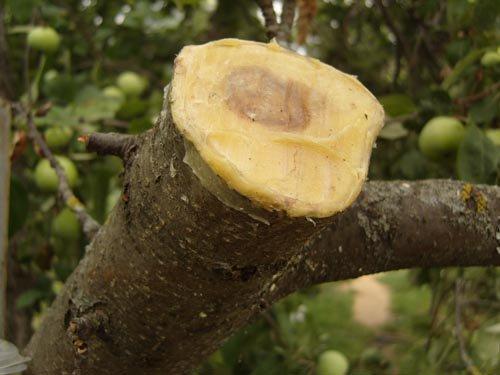
To trim branches, the most commonly used garden tool is a hand pruner. It is desirable that this tool also has elongated handles. In addition to the pruning shears, you will also need the following tools: a garden knife, a narrow hacksaw with special teeth (these teeth allow you to make a cut that is not too traumatic).
An ordinary hand pruner is used when cutting branches up to 2 cm thick. And a tool with elongated handles is used for branches whose thickness is 4 cm. Hacksaws are already used when cutting very thick branches. Cut branches must be treated with garden varnish or oil paint.
If during pruning the air temperature is less than eight degrees, then it is better to use paint, since at low temperatures garden var does not stick to wood. Pruning tools need to be constantly monitored.It is advisable that all tools be well sharpened, since a blunt pruner will simply grind the cut area.

